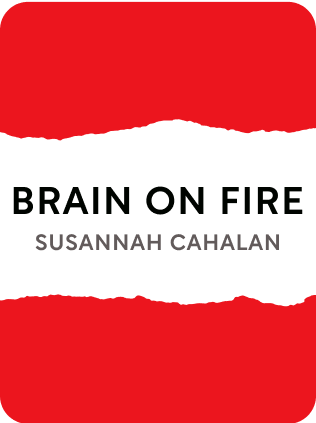

This article is an excerpt from the Shortform summary of "Brain On Fire" by Susannah Cahalan. Shortform has the world's best summaries of books you should be reading.
Like this article? Sign up for a free trial here .
What are the Brain on Fire themes that you need to know? How do these themes reflect Susannah Cahalan’s journey?
The Brain on Fire themes are positivity, loyalty, fear, and memory. Each reflects an important component of the story.
Read more about the key Brain on Fire themes that are essential to understanding the book.
Brain on Fire Themes
The book is about Susannah Cahalan and her mysterious illness. But her story also included the way her family and boyfriend supported her and the way she fought during and after. Here are 4 Brain on Fire themes.
Positivity
Another one of the key Brain on Fire themes is the mindset, which was to remain positive. Susannah has been moved to a new room in the epilepsy ward. It’s peaceful and quiet. Her dad is happy with the change, as well as a newfound warmth in Susannah’s attitude toward him. Heartened, he asks if she’d like to take a walk around the floor. His happiness vanishes when he sees that Susannah can only walk with difficulty. In order to appear positive, he suggests a family motto. “What’s the slope of the line?” he says, indicating an upward angle with his arm. “It’s positive,” he says when Susannah doesn’t answer. “What does that mean? It means we make progress every day.”
Brain on Fire Themes for People Around Susannah: Loyalty
Susannah’s dad has noticed that she receives better care from the exasperated nurses when she has company, so he starts visiting every day, arriving first thing in the morning. Susannah continues to believe her hallucination that her dad murdered his wife, so she won’t let him in the room. Instead, he takes up vigil in the hallway just outside her door.
Susannah’s mother starts to visit at least three times a day. She keeps detailed notes and a running list of questions for Susannah’s team of doctors. She and Susannah’s father develop a journal system to communicate with each other, as their nasty divorce still makes it difficult for them to speak face-to-face.
Fear
She has to live with the possibility of relapsing (20 percent of patients who have recovered from her illness experience a relapse; patients who did not have teratomas, like Susannah, experience a higher relapse rate). When colors seem too bright, she wonders whether she’s going crazy again. Some of these changes scare her.
Even fully recovered, Susannah can remember only the hallucinations she experienced during her illness; she can’t recall its day-to-day reality. This strange discrepancy makes her wonder whether she can rely on her own mind. Living with fear is one of the Brain on Fire themes.
Memory
Another key theme from Brain on Fire is memory and how important it is. Two years after her release from the hospital, Susannah returns to NYU for a visit. Much to her disappointment, nothing looks familiar. Until she’s hit by a smell. And she sees the purple lady. They hug, and images flood Susannah’s mind: Stephen arriving with his nature DVDs. Her father feeding her. Her mother staring out the window.
Memories rush back to Susannah, knocking her off balance. With each memory recovered, she wonders what others remain, knowing there are thousands she’ll never retrieve. The other Susannah, the mad Susannah, calls out to her, saying, “Don’t forget me. Please.”

———End of Preview———
Like what you just read? Read the rest of the world's best summary of Susannah Cahalan's "Brain On Fire" at Shortform .
Here's what you'll find in our full Brain On Fire summary :
- How a high-functioning reporter became virtually disabled within a matter of weeks
- How the author Cahalan recovered through a lengthy process and pieced together what happened to her
- How Cahalan's sickness reveals the many failures of the US healthcare system






